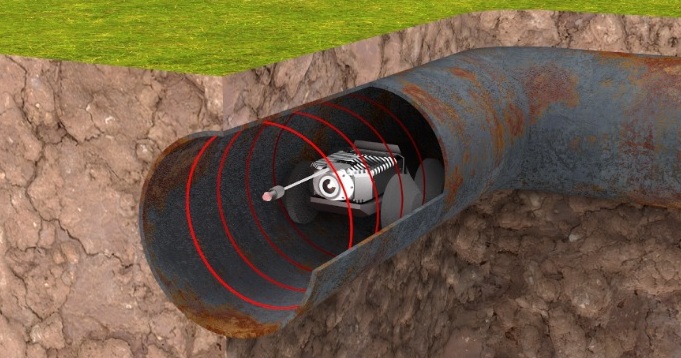Inspection robots, which are one of the most common application of autonomous mobile robots, are being deployed more often every day. In the press release below from ANYbotics of CA, USA, a system called “Data Navigator” is introduced.

Image Credit: Anybotics – www.anybotics.Com

Image Credit: Anybotics – www.anybotics.Com
ANYbotics Press Release:
****************************
ANYbotics Launches Data Navigator: Unlocking the Value of Robotic Inspection Data for Energy, Metals, Mining, Oil & Gas Industries
Zurich, Switzerland – ANYbotics, a global leader in AI-driven robotic inspection solutions, today announced the launch of Data Navigator, a new asset management platform that empowers businesses to harness the full potential of inspection data. Data Navigator transforms data collected by ANYmal robots into actionable insights, providing a comprehensive view of asset health and enabling preventive maintenance strategies that minimize downtime and optimize operations.
In industries like Energy, Metals, Mining, Oil & Gas, where asset integrity is paramount, Data Navigator offers a critical advantage. By centralizing multiple key asset condition data types, such as thermal, acoustic, visual, and gas readings, the platform simplifies asset health assessments and provides trend monitoring for preventive maintenance. This allows companies to predict potential failures before they occur, saving significant time and resources.
Data Navigator’s intuitive interface requires no specialized robotics expertise, ensuring broad accessibility across teams. Its flexible deployment options, including on-premise (local and air-gapped—no internet required) and cloud, seamlessly integrate with existing IT infrastructure while maintaining robust data security. Data Navigator enables rapid validation of ANYmal deployments, providing immediate asset insights from robotic inspection data. The solution is ready to use out-of-the-box and can integrate with enterprise systems like SAP and IBM when required.
“Robotic inspection offers maximum value when the resulting data is readily available and actionable to those who need it most: the maintenance and reliability teams responsible for asset management and critical infrastructure,” says Péter Fankhauser, co-founder and CEO of ANYbotics. “Data Navigator is the key to unlocking that value, providing seamless access to asset health insights generated by ANYmal robots. Data Navigator empowers teams to monitor trends and make informed decisions, optimize maintenance schedules, and ultimately ensure continued plant uptime and the efficiency of operations.”
Key Features of Data Navigator:
- Asset-centric approach: Consolidates and centralizes access to multiple, relevant data types for a holistic understanding of asset health.
- Flexible deployment: Supports diverse infrastructure requirements with a range of flexible deployment options, while ensuring data security.
- Intuitive interface: ensures critical data is accessible to all approved users, regardless of technical expertise, requiring no specialized training.
- Ready to go: Out-of-the-box, easy-to-use solution enables users to gain immediate asset insights and a rapid path to realizing the transformative benefits of ANYmal robotic solutions. The platform can also integrate with enterprise systems as needed.
- Historical data analysis: Provides comprehensive access to historical data, enabling users to compare and identify trends around asset performance.
- Improved data access: Data-driven insights enable more effective maintenance planning and resource allocation, reducing costs and maximizing asset lifespan.
- Increase Operational Efficiency: Access to high-frequency, objective, and repeatable data eliminates guesswork in decision-making, leading to increased operational efficiency.
Recent successful pilot programs with three leading industrial companies showcased Data Navigator’s capabilities. The platform analyzed over 2,500 ANYmal inspections in two weeks, providing valuable asset health insights. Both on-premise and cloud deployments were rapid and seamless, with on-premise integrations becoming operational within hours. Data Navigator’s intuitive design also meant that maintenance teams did not require any specialized training to use it immediately.
Dominik Baumgartend, Maintenance Engineer, Grace, says: “Data Navigator is very intuitive and easy to use for everyone. Every team—from maintenance to electrical and mechanical —can filter and access the insights they need.”
Thorsten Piniek, VP Health and Safety, Outokumpu, says: “Data Navigator will allow us to compare historical data, see trends, and get warnings based on anomalies. This will allow us to schedule and prioritize necessary maintenance work before failures occur.”
Patrik D’Allens, Head Technical Services, DSM-Firmenich, says: “To us it was important that the data stays on our servers. We installed Data Navigator as an on-premise, air-gapped solution for data privacy, keeping data secure on-site.”
About ANYbotics
ANYbotics, a global leader in AI-driven robot inspection solutions, tackles critical industry challenges in safety, efficiency, and sustainability. Designed for the toughest industrial environments, ANYbotics’ ANYmal robots excel in autonomous operations, advanced mobility, and real-time data collection, making them ideal for tasks such as routine inspections, remote operations, or predictive maintenance. Trusted by hundreds of industry leaders in energy, power, metals, mining, and chemicals worldwide, ANYbotics aims to augment industrial workforces with autonomous robots, addressing labor shortages and keeping workers out of harm’s way. Supported by over $130M in funding from leading European and Silicon Valley investors and a 200-expert team, ANYbotics has been shaping the future of industrial automation since 2009 with offices in Zurich and San Francisco. To learn more about how you can use ANYmal to transform your industrial operations, visit our website at anybotics.com.

Image Credit: Anybotics – www.anybotics.Com

******************
Press release by: ANYbotics







